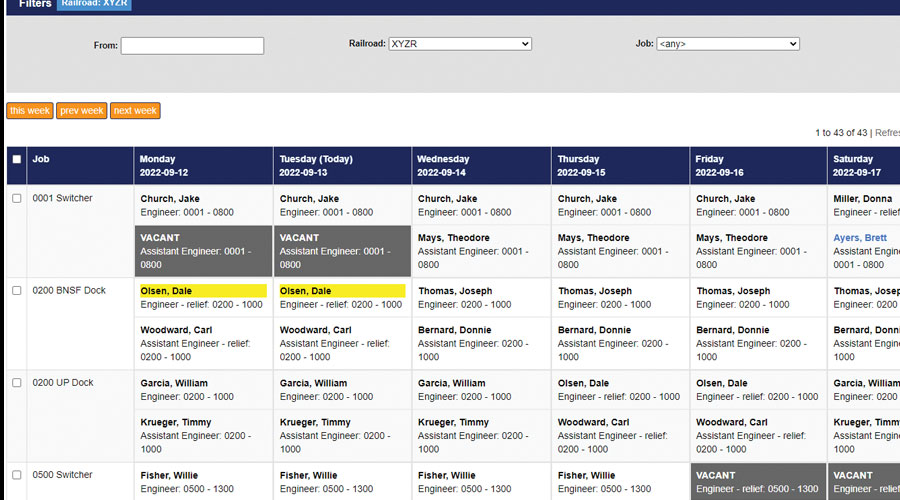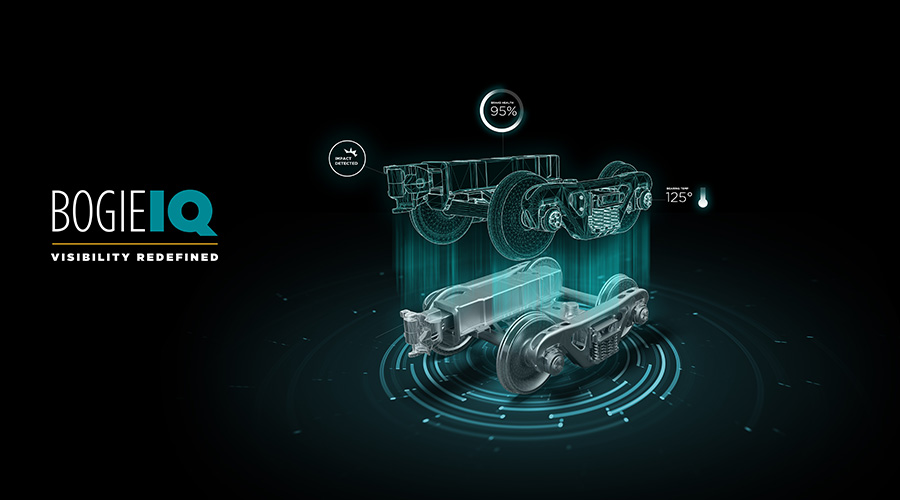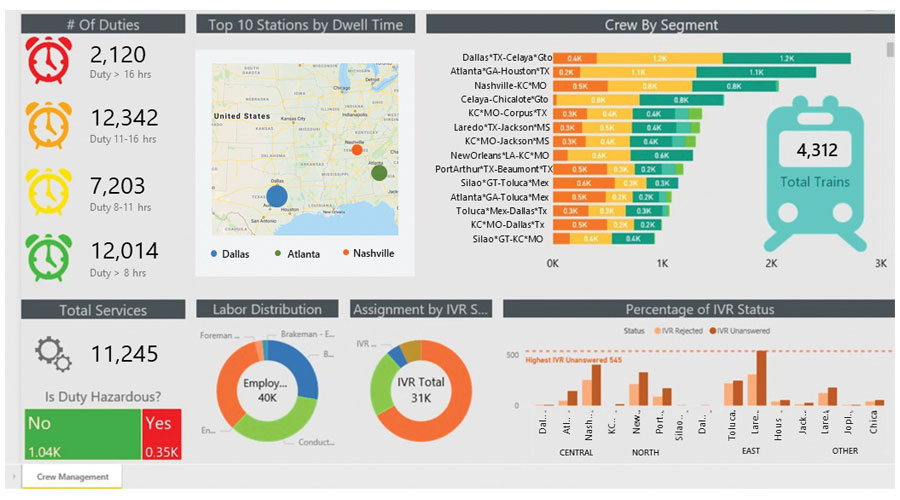Stay updated on news, articles and information for the rail industry
 railPrime
railPrime
February 2023
Rail News: Supplier Spotlight
Software, product providers seek to provide better Big Data solutions for railroads' analytics acumen
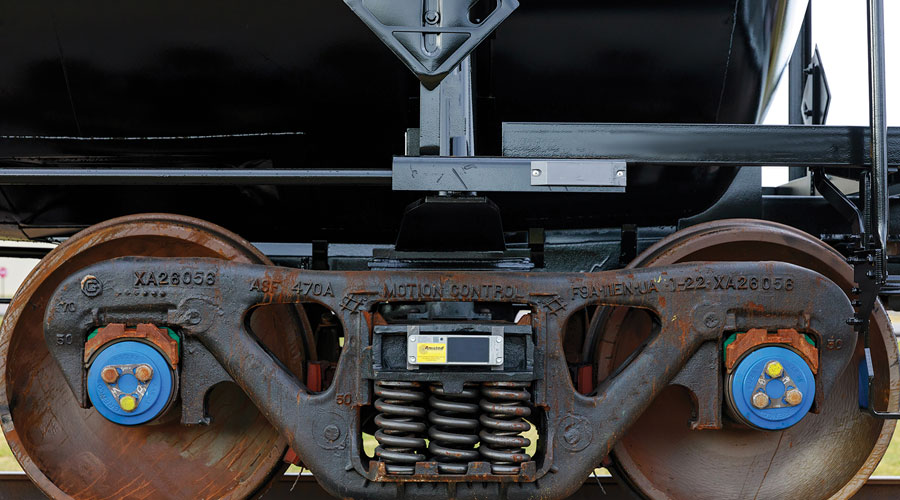
Compiled by Jeff Stagl, Managing Editor
When it comes to the Internet of Things (IoT) and Big Data, new trends continue to surface regularly in the rail industry.
Why? Because railroads keep searching for new ways to benefit from IoT, or the collection of data from physical objects via different sensors, and from Big Data, or faster and more efficient data storage and processing methods.
The University of Delaware’s annual Big Data in Railroad Maintenance Planning conference typically zeros in on the latest trends, and the 2022 iteration held Dec. 14-15 in Newark was no exception. The common theme among 23 presentations and the keynote address was how Big Data/IoT is being used more in rail maintenance planning of late, especially for long-term planning, says Allan Zarembski, the conference’s director
“This gets talked about every year, but now we’re hearing about results of what’s being done with Big Data in maintenance strategies,” says Zarembski, the professor and director of the university’s Railroad Engineering and Safety Program.
Two Amtrak presentations plus a keynote by Amtrak CEO Stephen Gardner reviewed the practical applications of data analytics and how to take track geometry data to the next level. Through what it characterizes as its data-driven toolbox, Amtrak develops a “surfacing score” to help with its long-term track maintenance strategy so curve locations and elevations to maintain are better identified, says Zarembski.
“It all feeds into surfacing planning and gaining a more accurate look at a maintenance strategy,” he says.
Among other presentations, conference attendees learned how BNSF Railway Co. is developing machine learning models for ballast maintenance decisions, CSX is employing light detection and ranging or lidar data to better manage vegetation at crossings and improve sightlines for motorists, and MTA Metro-North Railroad is using an automated track geometry system to significantly reduce rail problem areas.
“Over four years, Metro-North had a 95% decrease in safety exemptions and a 50% decrease in maintenance exemptions,” says Zarembski.
Big Data/IoT software and solution providers are trying to keep tabs on trends, too. They seek to respond to changing needs so they can provide railroads better options for data-driven objectives.
Following are details about the latest Big Data/IoT offerings from five software and solution providers, who shared the information via email.
Amsted Digital Solutions
In 2022, Amsted Digital Solutions introduced the Bogie IQ™ telematics gateway, a streamlined solution for condition monitoring of critical components offering the GPS benefits of traditional telematics gateways without the need for wireless sensors.
Bogie IQ provides rail shippers, asset owners and maintenance-responsible parties (MRPs) with real-time insights so they can optimize routes, maximize rail-car utilization, simplify reconciliations and invoices, reduce operating costs and increase safety, Amsted Digital officials said.
The solution offers such benefits as constant monitoring of wheel and brake health; monitors for wheel slide events and out-of-round wheel defects; brake system monitoring, leveraging both accelerations and sound; and actionable intelligence viewed through the Supply Chain Visibility™ software platform, Amsted Digital’s scalable, flexible and secure technology stack built on Microsoft Azure. Bogie IQ’s GPS benefits include dynamic estimated times of arrival, first- and last-mile validation, and accurate mileage.
Bogie IQ can be retrofitted on any existing Amsted Rail® Motion Control® truck without specialty tools or hardware, Amsted Digital officials said.
Asset owners and MRPs have been increasingly interested in integrating valuable and reliable condition monitoring of critical components into their fleet management strategies, they said. Amsted Digital developed Bogie IQ as a direct response to this trend to address the need for focusing better intelligence at the cost drivers without the added expense of additional wireless sensors, Amsted Digital officials said.
Bogie IQ is designed to actively monitor the changing conditions of a wheelset and the performance of the brake system with one single device per bolster, providing owners and MRPs with the data they require to optimize maintenance procedures and ultimately lower operating costs, they said.
Lat-Lon
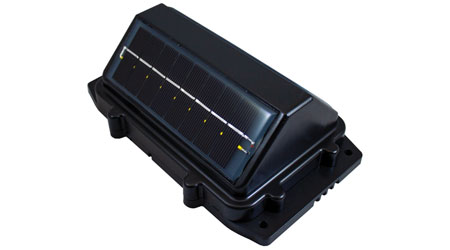
Lat-Lon has been a part of the IoT world since 1999, manufacturing solar GPS tracking and monitoring devices for the transportation industry.
The company started with a basic solar GPS track-and-trace unit (STU) on the analog cellular network, then migrated to 2G, CDMA (1xRTT), 3G GSM and now 4G/LTE with options of CAT1 and CAT-M.
Lat-Lon also evolved through several iterations of its hazardous locations certifications. The company’s current certification — fort he STU and wireless sensors — is Class I and II, Division 2 and Class III, Divisions 1 and 2. Already having this type of certification is helpful since the AAR mandate of Class I, Division 2 is quickly approaching.
Lat-Lon also has developed numerous sensor options, such as 3 axis impact detection. Wired and wireless sensors include handbrake detection, hatch, door, temperature, temperature rate of change and pressure sensors.
As technology has changed, the company has sought to change along with it. Lat-Lon has moved from 433Mhz wireless sensor options to a 2.4Ghz dust network, and now has integrated Bluetooth BLE 5.2.
Largely focused on the rail industry since its inception, Lat-Lon is working on the next big hurdle: the new SAFE TRAINS Act. While awaiting a final Federal Railroad Administration ruling, the company anticipates already being compliant with the act.
Lat-Lon’s data can be viewed its mobile apps, web-based portal or via an API data pull. Features include a dispatch page, customizable reports, adaptive configuration options, email and text alerts, scheduled reports, geozones and real-time tripwires.
Loram Technologies
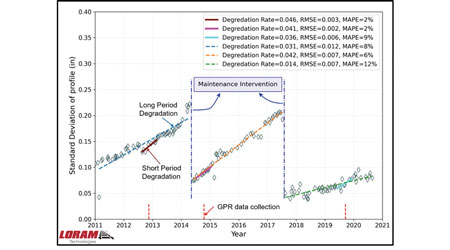
The fundamental indicator of track condition is track geometry, and in most cases, the condition defining the need for track quality improvement is poorly performing geometry.
When thinking about geometry, it’s typical to consider the lines, curves and angles that make up a track’s position along a right of way, and to talk about such things as vertical profile, horizontal alignment, cross level and gage. Data from a track geometry measurement vehicle provides an objective indication of the roughness of track, and by aligning and comparing track geometry roughness over time, one can quantify the performance and deterioration rate of the track, Loram Technologies officials said.
Integrating performance information derived from track geometry data with condition information and maintenance records provides insight into the root cause of track performance issues and the effect of different maintenance on track performance and the rate of deterioration, they said. From a track substructure perspective, ground penetrating radar (GPR) data provide continuous measurement of track substructure layer conditions by providing information on the fouling condition of ballast, the subsurface moisture condition, and the layer thickness and configuration of the bottom of ballast layer and top of the subgrade.
Additional right-of-way information from lidar scanning — precisely aligned to GPR and track geometry information — provides an even more complete picture of the health of a line, Loram Technologies officials said. Studying the short- and long-period degradation rates of geometry data in different conditions (known from integrated GPR and lidar data) before and after different maintenance is very useful in forecasting problematic locations and performing preventive maintenance instead of active maintenance.
RailComm LLC
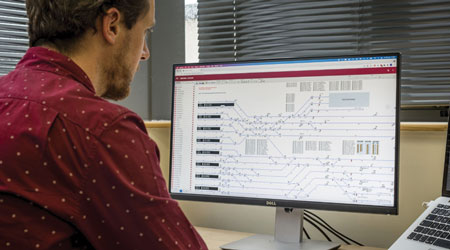
Since becoming part of the Tracsis Group in March 2022, RailComm LLC has offered IoT products and services to the U.S. rail sector. Tracsis’ suite of remote condition monitoring data loggers and associated software platforms enable rail operators in the United Kingdom to adopt condition-based maintenance practices and the remote monitoring of signaling assets.
Combined with RailComm’s knowledge of the U.S. rail industry, there’s now a comprehensive solution that brings IoT on the railway to life, company officials said. Switches, track circuits, interlockings, axle counters, grade crossings and more can be monitored in one location with failure warnings and alarms automatically raised.
Equipment agnostic, non-intrusive sensors and data loggers harvest data in the field, undertaking edge processing, before transmitting data to a cloud-based platform. Data is continually, and automatically, analyzed to identify deviations in behavior, enabling preventative action to reduce delays and alert engineers to failures that could impact safety, RailComm officials said.
Advanced playback functionality allows users to investigate incidents at grade crossings and deep-dive into intermittent issues that would not be detected if scheduled inspections are relied on, they added.
Within the wider technology industry, there is a trend for hardware equipment providers to offer condition monitoring data and platforms for their own systems. But when handling a complex system — such as a railway — running multiple platforms for different assets is untenable, RailComm officials said.
Tracsis/RailComm provides a consolidated platform designed to enable multiple assets — such as switches, track circuits, crossings, interlockings and more — to be monitored. That means users need to be trained on fewer software products and systems, RailComm officials said.
ZTR
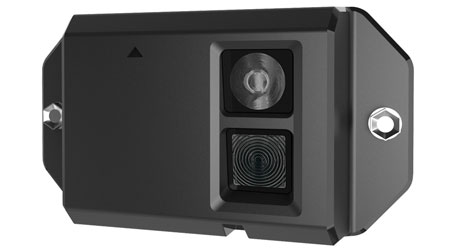
ZTR’s origin in the IoT space has provided an advantage, fueling its latest product offerings, company officials said. For example, ZTR has introduced several enhancements to its PIVOT rail-car monitoring solution.
Through its ever-growing list of connected technology products — including SmartStart, KickStart and NEXSYS — the company was able to uncover trends that enlightened customers about their locomotive and rail-car performance, ZTR officials said. With those insights, the company recognized a huge opportunity to deliver greater value to its customers.
Going beyond visibility and location, ZTR added rail-car impact, load and handbrake detection features to its PIVOT solution. Now in addition to its telematics and software services, the company’s new PIVOT sensors are designed to deliver enhanced insights so railroads, rail-car owners, lessors and shippers can download the details they need to make more informed decisions.
Technology is constantly evolving, not just in capturing more immediate information, but in making it easier to discern what’s relevant and where to focus. Railway IoT can be complex, but that’s where ZTR’s legacy as a leading railway IoT provider comes in, company officials said.
PIVOT’s recent product enhancements have led to more customer data, and customers are approaching the telematics provider to analyze it. Higher demand for data analytics means there’s also a need for more analysts to explore improvement and savings opportunities, ZTR officials said.
Rail-car and shipment visibility continues to grow in importance, led by the emergence of RailPulse, a coalition that seeks to facilitate the adoption of GPS and other telematics technology across the North American rail-car network to increase visibility, efficiency and safety. ZTR is excited about participating in the RailPulse pilot project, which is expected to go live in mid-2023, company officials said.
Email questions or comments to jeff.stagl@tradepress.com.


 2025 MOW Spending Report: Passenger-rail programs
2025 MOW Spending Report: Passenger-rail programs
 Gardner steps down as Amtrak CEO
Gardner steps down as Amtrak CEO
 Guest comment: Oliver Wyman’s David Hunt
Guest comment: Oliver Wyman’s David Hunt
 Women of Influence in Rail eBook
Women of Influence in Rail eBook






